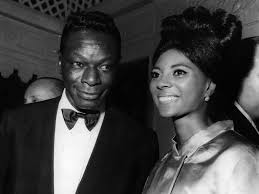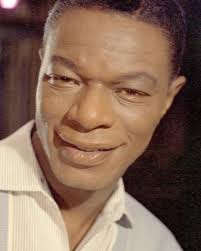 THE “SON CUBANO”, A BASIC GENRE WITHIN THE CUBAN MUSIC. VIDEOS.
THE “SON CUBANO”, A BASIC GENRE WITHIN THE CUBAN MUSIC. VIDEOS.
The “Son Cubano” is a genre of music and dance that originated in the highlands of eastern Cuba in the late 1800s in a multiple zonal locations that include the Montunero suburbs of some eastern cities, such as Guantánamo (with the Changüí), Baracoa (place where according to Sindo Garay, the Cuban tres originated), Manzanillo (with its organic base) and Santiago de Cuba with its folkloric neighborhoods of suburban locations.
The Son Cubano as a vocal genre, danceable instrumental, constitutes one of the basic forms within Cuban music.
BASIC COMPONENTS OF SON CUBANO
The Son is a syncretic genre that fuses elements of Spanish and African origin. Among its fundamental Hispanic components are the vocal style, lyrical metrics, and the primacy of tres, derived from the Spanish guitar. On the other hand, its characteristic harpsichord rhythm, call, and response structure, and percussion section (bongo, maracas, etc.) have their roots in traditions of Bantu origin.
https://youtu.be/9AKyitZb1tY
Press ^ Here
El Son Cubano
The son moved from the East to Havana around 1909, brought to the capital by the soldiers of the Permanent Army, in a process of transculturation that determined the entry into the eastern region of the rumba. The incorporation of the genre to the danzoneras orchestras, when José Urfé, in 1910, composed his danzón El bombín de Barreto, adding a son motif to its final part, and the emergence of the legendary Habanero Sexteto, in 1920, and later Septeto Nacional, They gave a huge boom to Cuban son.
It is danced by a linked couple, and to produce its music a wide range of instruments is used that can range from a simple tres or guitar, sometimes accompanied by marimbuela, güiro, and bongo, to larger and more complex groups.
Initially danced in accessories, plots, and dance academies by popular layers and the dance halls of Havana, and of the important cities, they were forced to open the diffusion, and the record printing houses gave it an unlimited diffusion.
Eliseo Grenet wrote about the structure of the son: “It consists of the repetition of a chorus of no more than four bars originally called montuno, which is sung in chorus, and a contrasting motif for a single voice that does not exceed eight “.
PERCUSSION RING AND RHYTHMIC DESIGN OF THE SONG
By examining the old written musical sounds and based on the auditory experience, it can be affirmed that the son (already in its classical, evolved form, as interpreted by the sextets and septets of the capital of Havana around the 1920s) presents three bands clearly defined by their percussive timbre and characteristic rhythmic-harmonic design (the double bass played in pizzicato and the guitar with its typical stripe – semi-percussed strumming are not, of course, percussion instruments, but they add to the percussion complex based on the way that the sonero executes them).
While the tres punctuates its motifs, the guitar invariably sustains an accompanying pattern in a scratch (semi-percussed rasguado) that in 2/4 time corresponds in musical values to two groups of four sixteenth notes.
The attack of this scratch entails a singular displacement of accents that only those who know the genre thoroughly dominate.
The maracas and the bongo rhythmically duplicate the guitar in identical figuration.
The rhythm module of the harpsichord features a compass design.
The second is integrated at the same time by the accompanying guitar, the maracas, and the bongo (the latter in the first part of the son, since in the chorus the bongo leaves its constant rhythm -hammer- and moves in variations and free rhythmic improvisations).
Classic authors of the genre such as Bienvenido Julián Gutiérrez, Ignacio Piñeiro, and Arsenio Rodríguez, and interpreters such as the trumpeter Félix Capotín and the great singer Benny Moré, are determining figures in a progressive development that encompassed almost all Cuban musical strata and that influenced -influences- in no small part of the production of various areas of the world “.
The presence of this Cuban genre is important – and growing -, on a universal scale, within the most authentic and valuable musical expressions of today.
The Cuban son complex has triumphantly traveled through the Caribbean, Latin America, North America, Europe, and other areas of the world.
 EL SON CUBANO, UN GÉNERO BÁSICO DENTRO DE LA MÚSICA CUBANA. VIDEOS.
EL SON CUBANO, UN GÉNERO BÁSICO DENTRO DE LA MÚSICA CUBANA. VIDEOS.
El son cubano es un género de música y danza que se originó en las tierras altas del oriente cubano a fines del 1800 en una ubicación zonal múltiple que comprende los suburbios montuneros de algunas ciudades orientales, como Guantánamo (con el Changüí), Baracoa (lugar donde según Sindo Garay, se originó el tres cubano), Manzanillo (con su base organera) y Santiago de Cuba con sus barrios folklóricos de emplazamientos sub-urbanos.
El Son Cubano como género vocal, instrumental bailable, constituye una de las formas básicas dentro de la música cubana.
COMPONENTES BASICOS DEL SON CUBANO
El son es un género sincrético que fusiona elementos de origen español y africano. Entre sus componentes hispánicos fundamentales se encuentran el estilo vocal, la métrica lírica y la primacía del tres, derivado de la guitarra española. Por otro lado, su característico ritmo de clave, estructura de llamada y respuesta y sección de percusión (bongo, maracas, etc.) tienen sus raíces en tradiciones de origen bantú.
https://youtu.be/kFzZLdUSL2E
Presione ^ Aqui
El Son Cubano
El son se trasladó de Oriente a la Habana sobre 1909 llevado a la capital por los soldados del Ejército Permanente, en un proceso de transculturación que determina la entrada en la región oriental de la rumba. La incorporación del género a las orquestas danzoneras, al componer José Urfé, en 1910, su danzón El bombín de Barreto, adicionándole un motivo de son a su parte final, y el surgimiento del legendario Sexteto Habanero, en 1920, y posteriormente Septeto Nacional, le dieron enorme auge al son cubano.
Se baila por pareja enlazada, y para producir su música se emplea una amplia gama instrumental que puede ir de un simple tres o guitarra, a veces acompañado de marimbuela, güiro y bongó, hasta grupos más grandes y complejo.
Bailado inicialmente en accesorias, solares y academias de baile por capas populares y los salones de baile de La Habana, y de las ciudades importantes, se vieron obligados a abrirle la difusion, y las casas impresoras de discos le dieron una difusión ilimitada.
https://youtu.be/gsKQalDu4VU
Presione ^ Aqui
Bailando El Son Cubano
Sobre la estructura del son escribió Eliseo Grenet : “consiste en la repetición de un estribillo de no mas de cuatro compases originalmente llamado montuno, que se canta a coro, y un motivo de contraste para una voz a solo que no sola pasar de los ochos “.
TIMBRE DE PERCUSION Y DISENO RITMICO DEL SON
Mediante examen de los viejos sones musicales escritos y en base a la experiencia auditiva, puede afirmarse que el son ( ya en su forma clásica, evolucionada, tal como lo interpretaban los sextetos y septetos de la capital habanera hacia los años veinte ) presenta tres franjas claramente definidas por su timbre percusional y diseño rítmico-armónico característico ( el contrabajo ejecutado en pizzicato y la guitarra con su típico rayado – rasgueado semipercutido no son, desde luego, instrumentos de percusión, pero se suman al complejo percusional en base a la manera que los ejecuta el sonero ).
Mientras el tres puntea sus motivos, la guitarra sostiene invariable un patrón acompañante en un rayado (rasgueado semipercutido) que en compas de 2/4 corresponde en valores musicales a dos grupos de cuatro semicorcheas.
El ataque de este rayado conlleva un singular desplazamiento de acentos que solo dominan quienes conocen el género a fondo.
Las maracas y el bongó duplican rítmicamente en idéntica figuración a la guitarra.
El módulo rítmico de la clave presenta un diseño bicompasado.
La segunda la integra a un tiempo la guitarra acompañante, las maracas y el bongó (este último en la primera parte del son, ya que en el estribillo el bongó abandona su ritmo constante -martillo- y se desplaza en variaciones e improvisaciones rítmicas libres).
Autores clásicos del género como Bienvenido Julián Gutiérrez, Ignacio Piñeiro y Arsenio Rodríguez, e interpretes como el trompetista Félix Capotín y el genial cantante Benny Moré, son figuras determinantes en un desarrollo progresivo que abarcó casi todos los estratos musicales cubanos y que influí -influye- en no poca de la producción de diversas zonas del mundo “.
La presencia de este género cubano es importante – y creciente -, a escala universal, dentro de las expresiones musicales mas auténticas y valiosas de hoy.
El complejo del son cubano ha transitado triunfalmente por el Caribe, América Latina, Norteamérica, Europa y otras areas del mundo.
Agencies/ Wiki/ CubanMusic/ Helio Orovio/ Extractos/ Excerpts/ Internet Photos/ YouTube/ Arnoldo Varona/ www.TheCubanHistory.com
THE CUBAN HISTORY, HOLLYWOOD.
































